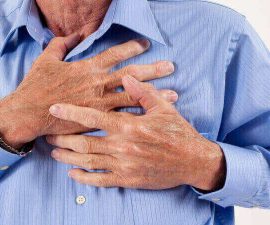A hiatal hernia is a condition in which part of the stomach pushes or slips through the esophageal hiatus (an opening in the area of diaphragm) into the chest. Luckily, it’s usually not serious – the outlook of the condition is excellent in most cases. Nevertheless, it could also turn into serious in a few cases. That’s why it’s still important to understand warning signs and symptoms when it’s getting worse so appropriate treatment can be given promptly.
It’s often diagnosed incidentally
Since it usually has no signs and symptoms, many people don’t know when they have it until it gets larger enough to cause symptoms. This makes it more difficult to early diagnose the condition. Even many times it’s discovered incidentally during an imaging test in the chest area for another condition.
Typically, most people with hiatal hernias are looking for medical care due to symptoms associated with GERD (gastroesophageal reflux disease). And when doctors believe that the symptoms have to do with hiatal hernia, they usually recommend the following procedures and tests to confirm correct diagnosis.
- A specialized gastrointestinal X-ray. Large hiatal hernias may show up on a simple chest X-ray. But for small ones, the specialized gastrointestinal X-ray is required. In this procedure, the patient is asked to drink liquid containing barium. In this way, the liquid coats and fills the inside lining of the esophagus and stomach, allowing doctors see abnormalities including a hernia.
- Upper endoscopy, a procedure in which a flexible tube (equipped with a small camera) is carefully inserted down through the throat to examine the esophagus and stomach lining.
- Esophageal manometry is also sometimes required. It can help diagnose a hiatal hernia by measuring the rhythmic muscle contractions of esophagus.
Treatment is not always necessary
Since hiatal hernia is asymptomatic in most cases, no treatment is usually necessary. But when it starts causing symptoms, treatment is often aimed to relieve the symptoms (not to cure or fix the hernia).
So treatment depends on the symptoms of the disease.
- A few lifestyle modifications. Reflux discomfort (heartburn) may be the most common problem caused by hiatal hernias. But it often improves with lifestyle changes – for example; eating more frequent, smaller meals are a good way to help neutralize stomach acid naturally.
- If lifestyle approaches are not enough to soothe your acid reflux, you may need acid suppressing medications (e.g. antacids, H-2-receptor blockers, or proton pump inhibitors).
Fortunately, surgery is rarely used for hiatal hernias – only fewer than 5 percent of all cases that require this option.
Symptoms of hiatal hernia ‘getting worse’
Again, the prognosis of the disease is good for most patients. It usually has no any symptom – and even though if it causes symptoms, they are manageable with medications!
Sliding hiatal hernia is the most common type of the condition, which accounts about 90-95 percent of all cases. It is a condition in which the gastroesophageal junction (the section where the esophagus joins the stomach) and a portion of the stomach slip into the chest. It rarely causes serious problems.




